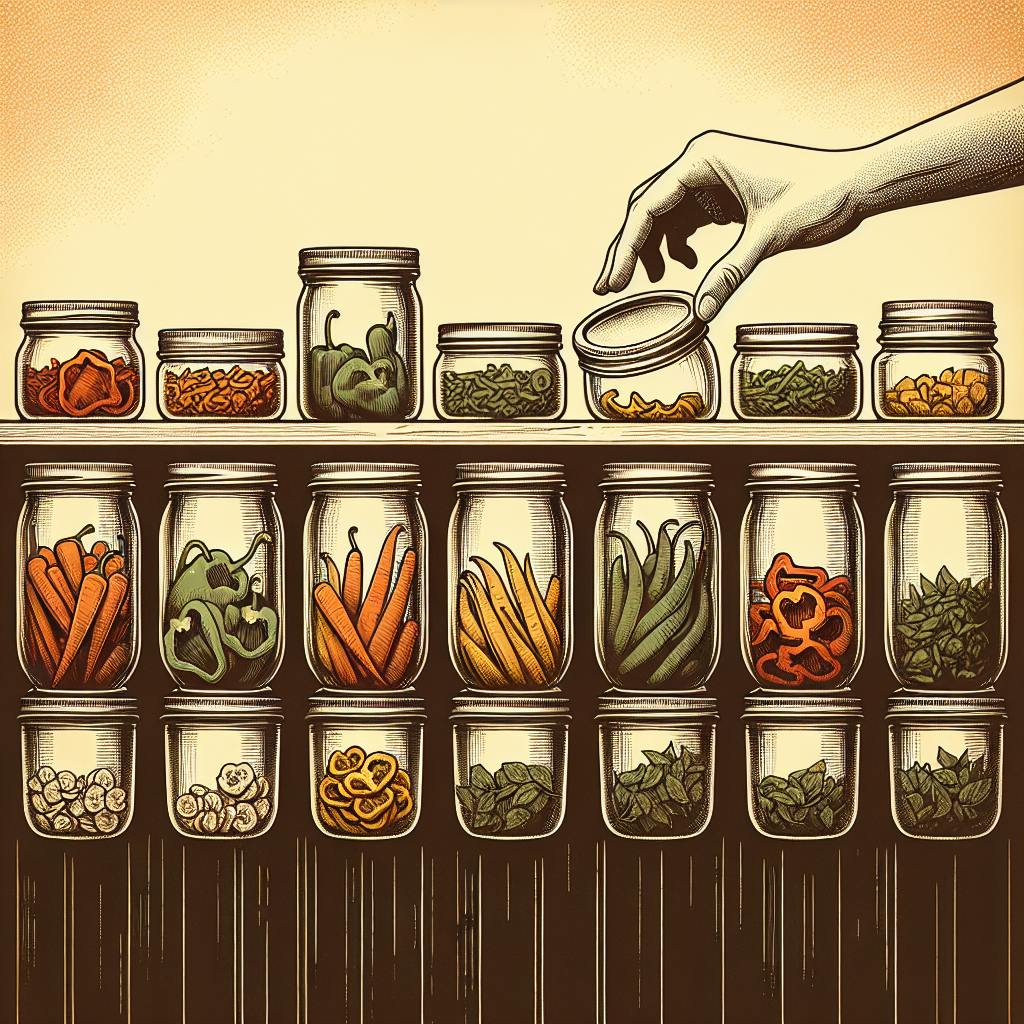Having a well-stocked emergency go bag ready in your home can mean the difference between life and death when disaster suddenly strikes. Recent hurricanes, floods, wildfires and other catastrophes have shown that calamity can arrive in an instant, forcing evacuations with little to no warning. During such emergencies, precious moments wasted gathering supplies could prove fatal. Preparing a grab-and-go evacuation kit ahead of time provides invaluable peace of mind, ensuring you and your family can evacuate swiftly and safely, ready to survive independently for several days if necessary.
An emergency go bag, also called a bug-out bag, bail-out bag, get-home bag or 72-hour kit, contains food, water, first aid, tools and other essential gear to sustain you for at least 3 days. This portable emergency kit is a key component of any household's evacuation plan. Having your bug-out bag stocked and ready to grab means not wasting a single minute gathering items when disaster strikes. The bag can simply be snatched on your way out the door, allowing you to focus entirely on reaching safety.
Defining the Emergency Go Bag
An emergency go bag is a portable survival kit specifically designed for evacuation emergencies. It contains supplies like food, water, first aid, clothing and tools to sustain you independently for a minimum of 72 hours. These kits are also commonly referred to as:
- Bug-out bag
- Bail-out bag
- Get-home bag
- 72-hour kit or bag
- Go-bag
- Evacuation kit
- Survival bag
Emergency go bags are an essential element of any household's emergency preparedness plan. Having these grab-and-go survival kits stocked and positioned near your home's exits allows for swift, efficient evacuation, providing vital provisions until you can reach a secure shelter or location.
While the contents of a bug-out bag can be customized based on your family's specific needs, climate and potential regional risks, all emergency go bags should adhere to key principles:
- Portable size and weight, allowing easy transport by hand or on your back
- Durable, weather-resistant bag or backpack with comfortable straps
- Ideal capacity between 20L to 50L for a 72-hour supply per person
- SECTION FOR KEY FEATURES OF GO BAGS
Pro-tip: Choose a brightly-colored bag that is easily identifiable, unlike ordinary backpacks used for school or travel. This allows you to grab your emergency bag quickly amid chaos.
Well-constructed go bags provide numerous benefits compared to hastily packing supplies into any old duffel bag or suitcase during an actual emergency:
- Specially designed to be efficiently portable by hand, on your back, or in your vehicle
- Kept by exit points in your home for immediate, easy access when needed
- Contents organized with designated places for specific items you need
- Gear chosen for durability, multi-functionality and packability
- Items inspected and rotated out before they expire
Top Go Bag Benefits
Maintaining emergency go bags provides numerous advantages for your household:
-
Enables swift evacuation: Having your bug-out bag already fully stocked means you can leave immediately without wasting precious time. During California's 2020 wildfires, families with go bags ready were able to evacuate within minutes of emergency alerts before roads were blocked by fire.
-
Peace of mind through preparedness: Simply knowing you have a plan and the needed provisions in case of sudden evacuation brings significant peace of mind. Studies show preparedness helps alleviate negative stress responses during disasters.
-
Independence to survive several days: Your go-bag contains the essentials to sustain your family independently, including shelter, food, water and first aid. This allows you to shelter-in-place if needed before receiving assistance.
-
Portability for any situation: Well-designed bug-out bags are compact, portable and transferable from home to vehicle to on-foot. This ensures you have your supplies no matter your evacuation circumstances.
-
Customizability for your family’s needs: Go-bags can be tailored based on ages, health needs, pets and other special considerations, ensuring everyone is covered.
Assembling bug-out bags ahead of time for your household is one of the simplest, yet most critical preparedness steps you can take. Having your go-to evacuation kits ready means no time squandered gathering supplies when seconds count. You can head straight to safety knowing you have what's needed to survive several days.
Bug-Out Bag Essentials
While the specific contents of your go-bag can be customized for your family's needs, certain categories of core essentials are universally recommended for any 72-hour evacuation kit:
Water and Food
Having an ample supply of water and calorie-dense food is an absolute necessity for your bug-out bag:
- 1 gallon of water per person daily for at minimum 3 days
- Portable water filtration system like LifeStraw to make found water potable
- Water purification tablets like Potable Aqua for emergency disinfection
- High-calorie, nutrient-dense food bars like DATREX, SOS or Wise Company
- MREs (meals ready-to-eat) or lightweight freeze-dried meals from Mountain House
- A manual can opener for accessing canned goods
Water is critical. Plan for at least one gallon per person daily. Items like portable filters, purification tabs and sealed bottled water ensure access to clean water. Pack calorie-dense, hardy foods like power bars, jerky, and MREs that won't spoil and are easy to take on the go.
First Aid Supplies
A well-stocked first aid kit provides the supplies you need to treat injuries and illnesses:
- First aid kit like Adventure Medical Kits Mountain Series or Surviveware Large
- Any needed prescription medications for at least 72 hours
- Common over-the-counter medicines - analgesics, antihistamines, antacids, laxatives
- Sterile gauze, rolls of bandage tape, trauma shears, antibiotic ointment
- Burn relief sprays and creams, sting relief wipes
- Tweezers, safety pins, needles and thread, wound closure strips
Make sure to pack several days' supply of any vital prescription medications. OTC drugs like ibuprofen, Benadryl, Pepto-Bismol, aspirin and Imodium help relieve common ailments. Basic first aid gear allows you to treat cuts, abrasions and burns.
Tools and Gear
Equipment like multi-tools, paracord, duct tape and gloves provide useful survival functions:
- Multi-tool like a Leatherman OHT or Swiss Army Knife
- 50 feet roll of 550 paracord for rigging shelters, gear repairs
- Work gloves to protect hands from injuries
- Duct tape for equipment repairs, securing bandages/dressings
- Fire starting kit like a magnesium rod, stormproof matches and lighter
- Emergency whistle and signal mirror for alerting rescuers
Don't underestimate the versatility of a good multi-tool, rope and duct tape - they can be used creatively for repairs, first aid, shelter construction and other applications. Items like gloves, fire starters, whistles and signal mirrors could save your life in an emergency.
Hygiene and Sanitation
Maintaining basic hygiene prevents illness and infection:
- Antibacterial soap, toothbrush and toothpaste
- Baby wipes for cleaning skin, small towel
- Toilet paper, plastic trowel for burying waste
- Hand sanitizer, garbage bags for waste disposal
Pack hygiene basics like soap, baby wipes, toilet paper and sanitizer. This allows you to maintain health and cleanliness standards despite harsh conditions.
For a complete checklist of recommended food, water, first aid and other supplies, visit WeLovePrepping's Essential 72-Hour Emergency Kit Packing List. Their comprehensive guide contains over 50 must-have items to include in your bug-out bag.
Gear for Evacuations
In addition to basic survival supplies, an emergency go-bag should contain gear specifically for evacuation scenarios:
- Cash in small bills and coins for paying for supplies
- Copies of essential documents like ID cards, birth certificates, insurance in waterproof case
- Weather appropriate change of clothes - consider climate likely in your region
- Emergency radio like Midland ER310 to receive situation updates
- Regional maps with potential shelters, rally points marked
- LED flashlight with lithium batteries, glowsticks for visibility
- Multi-function tool like a Leatherman Wave for cutting, prying, screwdrivers
During evacuations, having cash on hand allows you to pay for fuel, food or lodging. Vital document copies prove identity and allow access to bank accounts if originals are lost. An emergency radio keeps you informed if cell networks are disrupted. Detailed maps with potential rally points and shelter locations mapped out provide orientation. Sturdy, multi-functional tools add survival capabilities.
Critical Gear - Light and Communications
Emergency lighting and communications equipment further enhances your readiness:
- LED flashlight able to sustain hours of continuous use
- Headlamp allowing hands-free lighting
- Glow sticks for visibility and signaling
- Emergency whistle and signal mirror for alerting rescuers
- Weather radio to receive official alerts and situation updates
Multiple light sources like durable LED flashlights, headlamps, and glow sticks are vital during evacuations. Having hands-free lighting allows you to navigate trails, unload supplies and administer first aid. Items like whistles and signal mirrors enable signaling if you need emergency assistance. A weather radio tuned to official stations provides continuous updates.
Tip: Choose lithium battery-powered lights, which perform better than alkaline batteries in cold weather. Pack extra batteries but also have a hand-crank flashlight that can recharge without battery changes.
Critical Gear - Navigation Aids
Navigation gear assists with situational orientation, helping you stick to planned evacuation routes and locate shelters:
- Detailed paper maps of surrounding region marked with potential rally points, shelters
- Compass for orienting direction if disoriented or GPS fails
- Personal GPS device like a Garmin inReach for tracking
Maps may seem antiquated, but paper won't fail like electronics. Have maps for surrounding areas marked with potential evacuation shelter sites, hospitals, police stations and other key infrastructure. A compass provides backup navigation if you become lost or disoriented. Bring a personal GPS locator if possible, allowing others to track your location.
Evacuating with Pets
If evacuating with pets, ensure your go-bag is stocked with:
- Pet prescription medications, veterinary records
- At least 7 days of pet food and water
- Backup leash, collar with ID tag, carrier or crate
- Waste pickup bags, litter pan and litter
- Pet first aid kit, grooming supplies
- Favorite toy or bedding for reducing stress
Don't forget to prepare ample food, medications and other essentials for pets. Familiar items like favorite toys or their bedding can help reduce pet stress during evacuations.
Customizing Your Bug-Out Bag
While all emergency go bags should contain basic survival supplies, you can tailor the contents based on your family’s ages, health needs and other considerations:
- Add gear suitable for children or elderly family members
- Include entertainment items like books, playing cards
- Pack irreplaceable personal documents, photos
- Have a designated spot for every item; keep organized
Customize based on who will be using the bag. Entertainment activities reduce stress and keep children occupied. Protect irreplaceable documents in waterproof cases. Place gear in designated pouches in your pack so you know exactly where key items are located.
Regional and Climate Considerations
Depending on your geographic region, you may need to add:
- Cold climates: Chemical hand and toe warmers, ski mask, insulated waterproof boots
- Hot climates: Electrolyte tablets, hydration bladder, cooling towels
- Coastal regions: Waterproof case, life vest, flares
- Mountains: Avalanche beacon, microspikes, portable shelter
If you live in cold regions, pack ample insulation and chemical warmers. Those in hot climates need extra hydration and heat protection. Coastal residents should add flotation devices. Mountain dwellers require avalanche safety gear and cold weather clothing.
Testing and Practice
Conduct practice drills with your go-bags to identify any gaps:
-
Set up your entire bug-out bag and use the gear as if evacuated for 72 hours. This allows you to refine contents.
-
Time how long it takes you to evacuate from home with your go bag. Strive for under 5 minutes.
-
Conduct fire or emergency evacuation drills using your bug-out gear annually so readiness becomes second nature.
Testing your evacuations and bug-out bag setup ensures that your system works and any deficiencies are identified. Rehearsing instills preparedness as a lifelong habit.
Key Takeaways
Having a well-stocked emergency go-bag prepared allows you and your family to evacuate swiftly and safely. Ensure your bug-out bag contains at minimum a 3-day supply of water, food, first aid, tools and other essentials. Include key evacuation items like cash, important documents, medications and an emergency radio. Customize your kit based on ages, health needs, pets and other considerations. Test your evacuation process and go-bag supplies annually. Staying equipped and ready to "bug out" provides invaluable peace of mind that you can react quickly in any sudden disaster.


